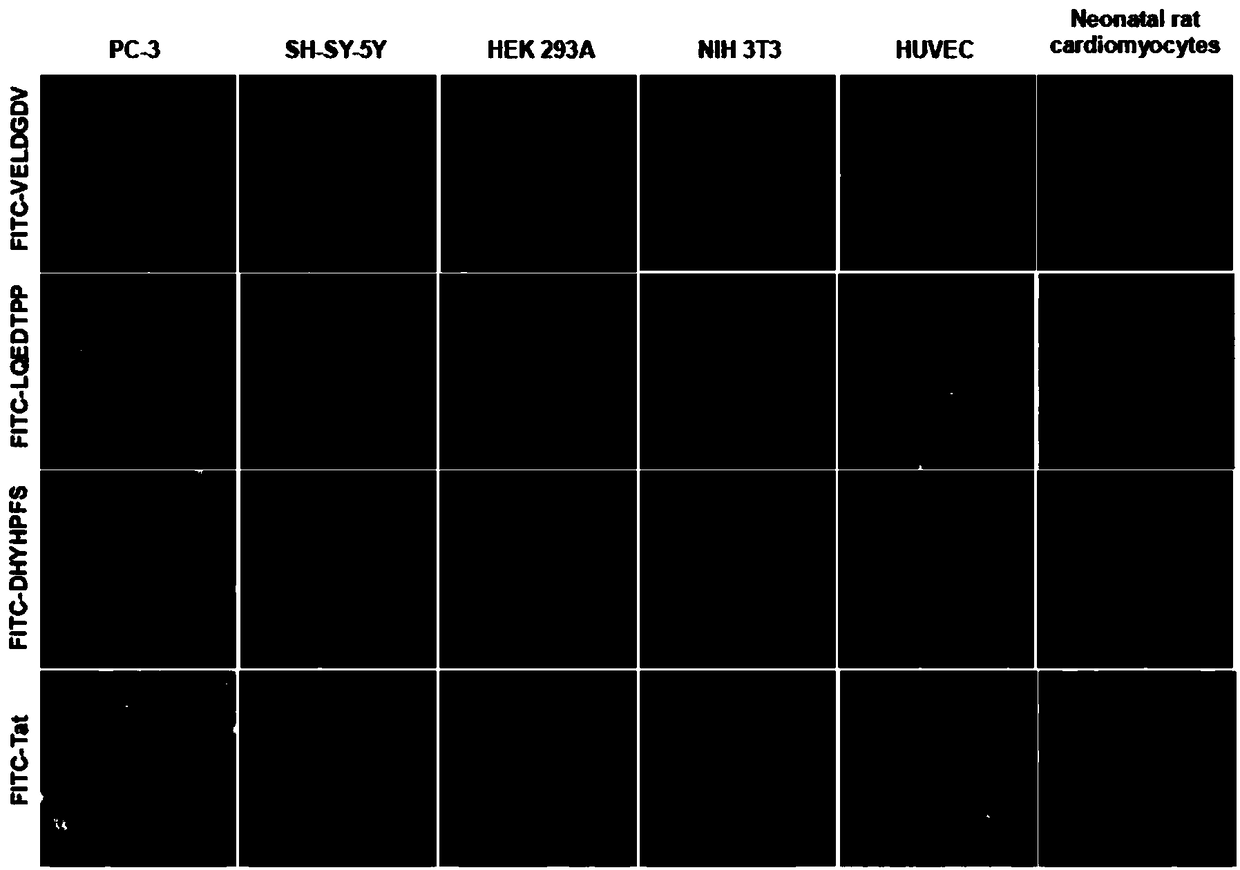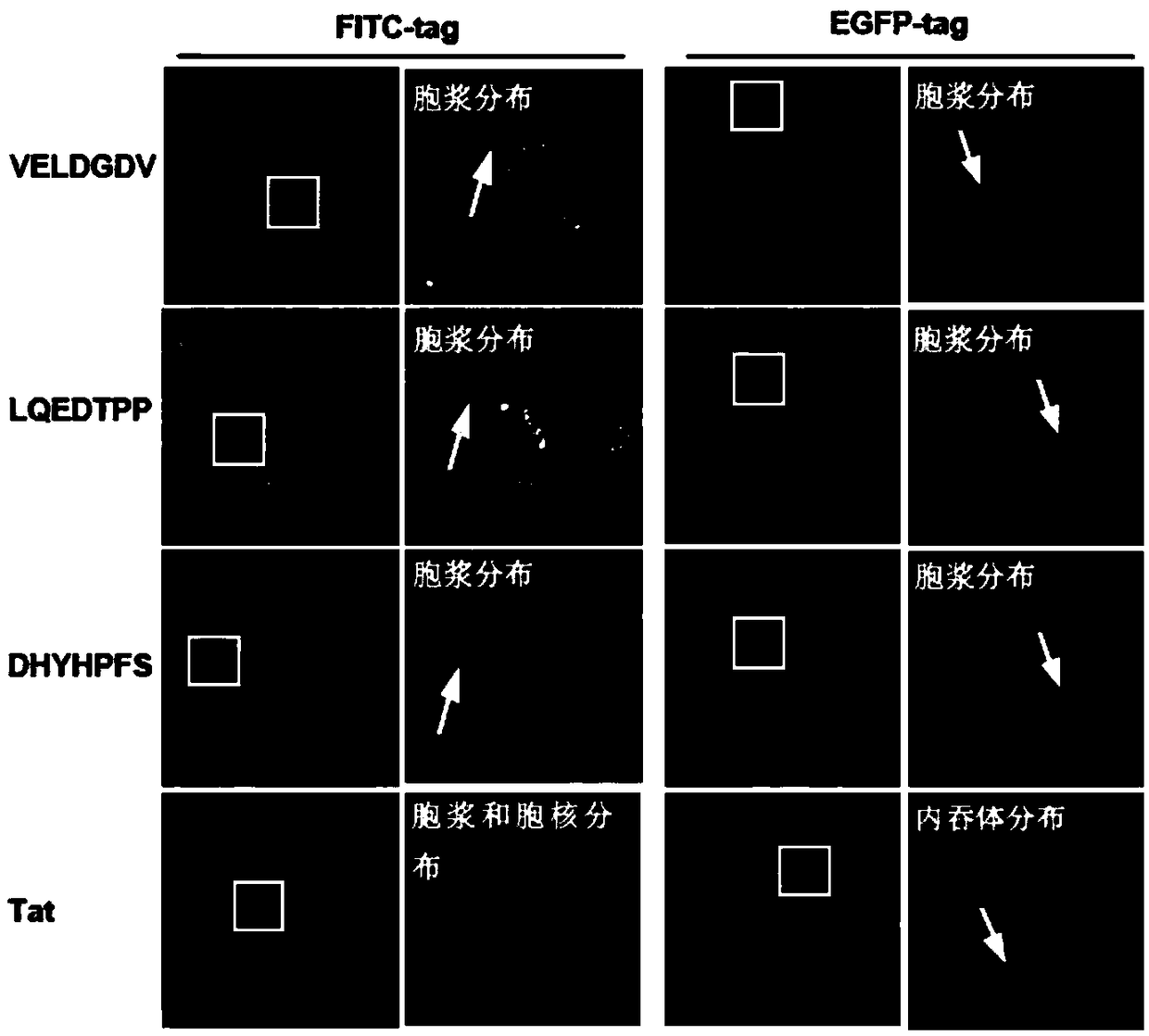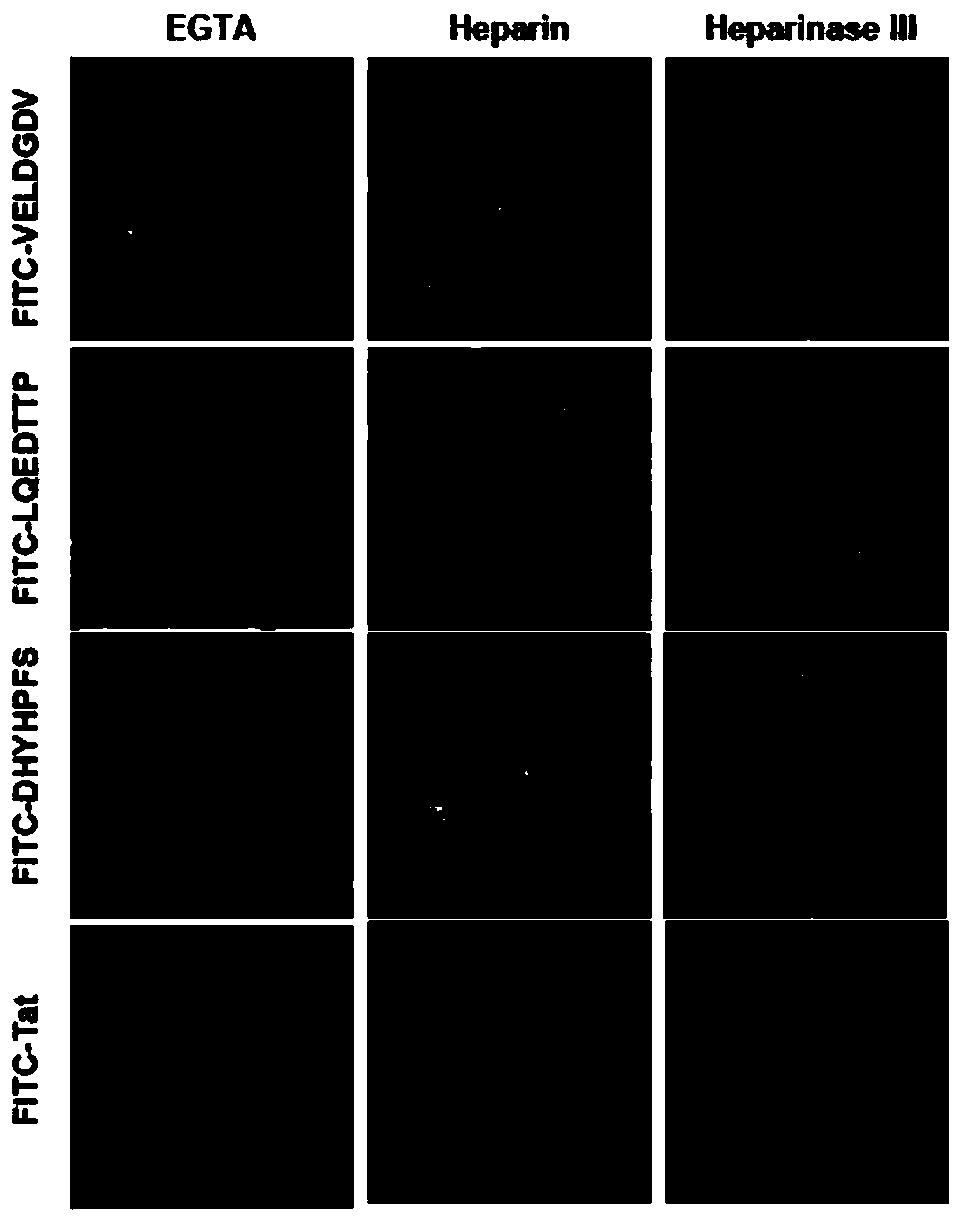Cell-penetrating peptide with negative charge and application thereof as intracellular transport carrier
A negatively charged, penetrating peptide technology, applied in the field of biomedicine, can solve problems such as low efficiency, and achieve stable metabolism and good intracellular release performance
- Summary
- Abstract
- Description
- Claims
- Application Information
AI Technical Summary
Problems solved by technology
Method used
Image
Examples
Embodiment 1
[0034] Negatively charged cell penetrating peptide with cellular internalization function and a negative net charge under physiological conditions. The amino acid sequence of the negatively charged cell penetrating peptide is: VELDGDV, LQEDTPP, DPNEKRD, DHMKQHD, NYTWDQW, TTDRHDL, SEQPAHS, DHYHPFS, SDAKNDL, DPYHPFS, SLTNTEH, TVSKGEE, EHYHPFM, TDTTPLQ, GGSAETG, DGPGTAA, SLTAPDY, PLDVNNM, DGTPVGM, LQNLGEF, DSHLSLM, VGSPDGL, DLNLPFA, or PLLEGSL.
[0035] The amino acid sequence VELDGDV has a net charge of -3 under physiological conditions; the amino acid sequence LQEDTPP has a net charge of -2 under physiological conditions; TDTTPLQ, GGSAETG, DGPGTAA, SLTAPDY, PLDVNNM, DGTPVGM, LQNLGEF, DSHLSLM, VGSPDGL, DLNLPFA, and PLLEGSL all had a net charge of −1 under physiological conditions.
[0036] The negatively charged cell-penetrating peptide can internalize mammalian cells, such as human cervical adenocarcinoma Hela cells, human prostate cancer cell line PC-3, human neuroblastoma ce...
Embodiment 2
[0046] In this example, three rounds of whole-cell screening of human cervical adenocarcinoma Hela cells were performed using a phage display peptide library, and 152 cell-penetrating peptide gene sequences were obtained, including 25 negatively charged penetrating peptides. The lower net charge is negative. It has been verified that the above-mentioned negatively charged cell-penetrating peptide can carry enhanced green fluorescent protein and be internalized into the human cervical adenocarcinoma Hela cell line. Its internalization process does not depend on the electrostatic interaction with the cell membrane surface, and is not affected by the pH value. After the cargo is internalized, it forms a diffuse distribution in the cytoplasm, and the intracellular release performance is good, and it does not enter the endosome. Metabolism Stablize.
[0047] The specific process includes the following steps:
[0048] 1) Screening of cell-penetrating peptides by phage display tech...
Embodiment 3
[0072] Use the 25 negatively charged cell-penetrating peptides obtained in Example 2 to verify whether they can internalize the human prostate cancer cell line PC-3, the human neuroblastoma cell line SH-SY-5Y, and the human kidney epithelial cell line Various mammalian cell lines including HEK-293A, mouse embryonic fibroblast cell line 3T3, human umbilical vein endothelial cell line ECV304, and neonatal rat cardiomyocytes. Experimental results show that the 25 negatively charged cell-penetrating peptides of the present invention can internalize the above-mentioned cells.
[0073] Such as figure 1 As shown, the results of experiments showing the internalization of FITC-VELDGDV, FITC-LQEDTPP and FITC-DHYHPFS in different mammalian cells are selected. figure 1 Shown in 5μmol / L FITC-VELDGDV, FITC-LQEDTPP or FITC-DHYHPFS and human prostate cancer cell line PC-3, human neuroblastoma cell line SH-SY-5Y, human kidney epithelial cell line HEK-293A, Fluorescent images of mouse embryon...
PUM
| Property | Measurement | Unit |
|---|---|---|
| electrical resistance | aaaaa | aaaaa |
| strength | aaaaa | aaaaa |
Abstract
Description
Claims
Application Information
 Login to View More
Login to View More - R&D
- Intellectual Property
- Life Sciences
- Materials
- Tech Scout
- Unparalleled Data Quality
- Higher Quality Content
- 60% Fewer Hallucinations
Browse by: Latest US Patents, China's latest patents, Technical Efficacy Thesaurus, Application Domain, Technology Topic, Popular Technical Reports.
© 2025 PatSnap. All rights reserved.Legal|Privacy policy|Modern Slavery Act Transparency Statement|Sitemap|About US| Contact US: help@patsnap.com



